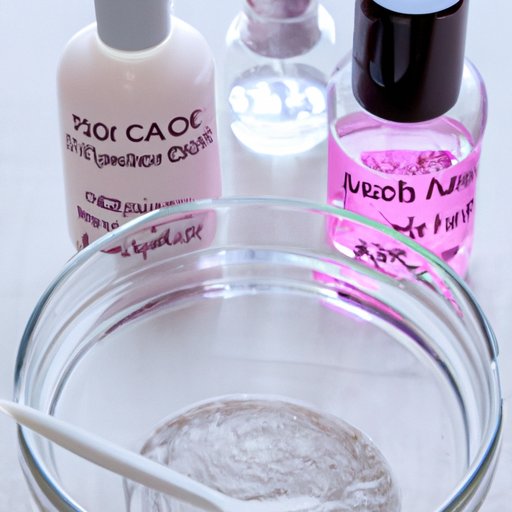Introduction
Nail polish has been around for centuries, but it wasn’t until the early 20th century that nail polish remover was invented. Since then, it has become an indispensable tool for removing unwanted nail polish. But what is nail polish remover made of?
This article will explore the ingredients and chemical makeup of nail polish remover. We’ll look at the common substances used in these products, as well as how they work to remove nail polish. By the end of this article, you’ll have a better understanding of what makes up nail polish remover and how it works.

An Overview of the Ingredients in Nail Polish Remover
Nail polish removers can be composed of a variety of different substances. The most common ingredients include acetone, ethyl acetate, isopropyl alcohol, and propylene carbonate. Other ingredients may also be present, such as fragrances, essential oils, and dyes.
The exact composition of a particular type of nail polish remover will depend on the manufacturer and the specific product. However, the primary purpose of all nail polish removers is to dissolve the polymer chains that make up the nail polish so it can be easily removed.
How Does Nail Polish Remover Work?
Nail polish remover is designed to break down the polymers in nail polish, allowing it to be easily wiped away. This is accomplished through the use of solvents such as acetone, ethyl acetate, isopropyl alcohol, and propylene carbonate. These solvents dissolve the polymers in the nail polish, making it easier to remove.
In addition to breaking down the polymers, the solvents in nail polish remover also help to reduce the tackiness of the nail polish, making it less likely to stick to your skin or nails. This helps to ensure that the nail polish is completely removed without leaving any residue behind.
A Closer Look at the Ingredients in Nail Polish Removers
Let’s take a closer look at the four most common ingredients in nail polish remover: acetone, ethyl acetate, isopropyl alcohol, and propylene carbonate.
Acetone
Acetone is a colorless, flammable liquid that is commonly used in nail polish removers. It is a powerful solvent that breaks down the polymers in nail polish, allowing it to be easily wiped away. It also helps to reduce the tackiness of the nail polish, making it less likely to stick to your skin or nails.
Ethyl Acetate
Ethyl acetate is an organic compound that is also commonly used in nail polish removers. It is a colorless liquid with a sweet smell and taste. It is a less powerful solvent than acetone, but it is still effective at dissolving the polymers in nail polish.
Isopropyl Alcohol
Isopropyl alcohol is another common ingredient in nail polish removers. It is a colorless liquid with a strong odor. It is a powerful solvent that is capable of dissolving the polymers in nail polish. It is also slightly less toxic than acetone and ethyl acetate, making it a safer alternative for those who are sensitive to the fumes of other solvents.
Propylene Carbonate
Propylene carbonate is an organic compound that is often used as a stabilizing agent in nail polish removers. It helps to keep the other ingredients from separating, and it also helps to reduce the evaporation rate of the remover.
Conclusion
Nail polish remover is a combination of several different substances, including acetone, ethyl acetate, isopropyl alcohol, and propylene carbonate. These substances work together to break down the polymers in nail polish, allowing it to be easily wiped away. They also help to reduce the tackiness of the nail polish, making it less likely to stick to your skin or nails.
By understanding the ingredients and chemical makeup of nail polish remover, you can make an informed decision about which product is right for you. For more information about nail polish removers, please consult your local beauty supply store or search online for additional resources.


